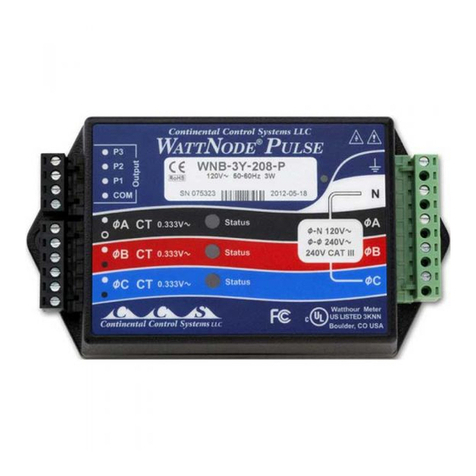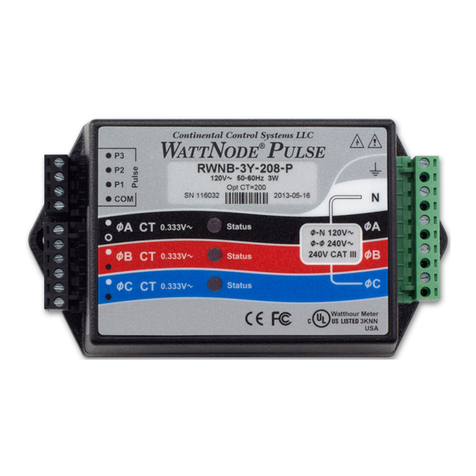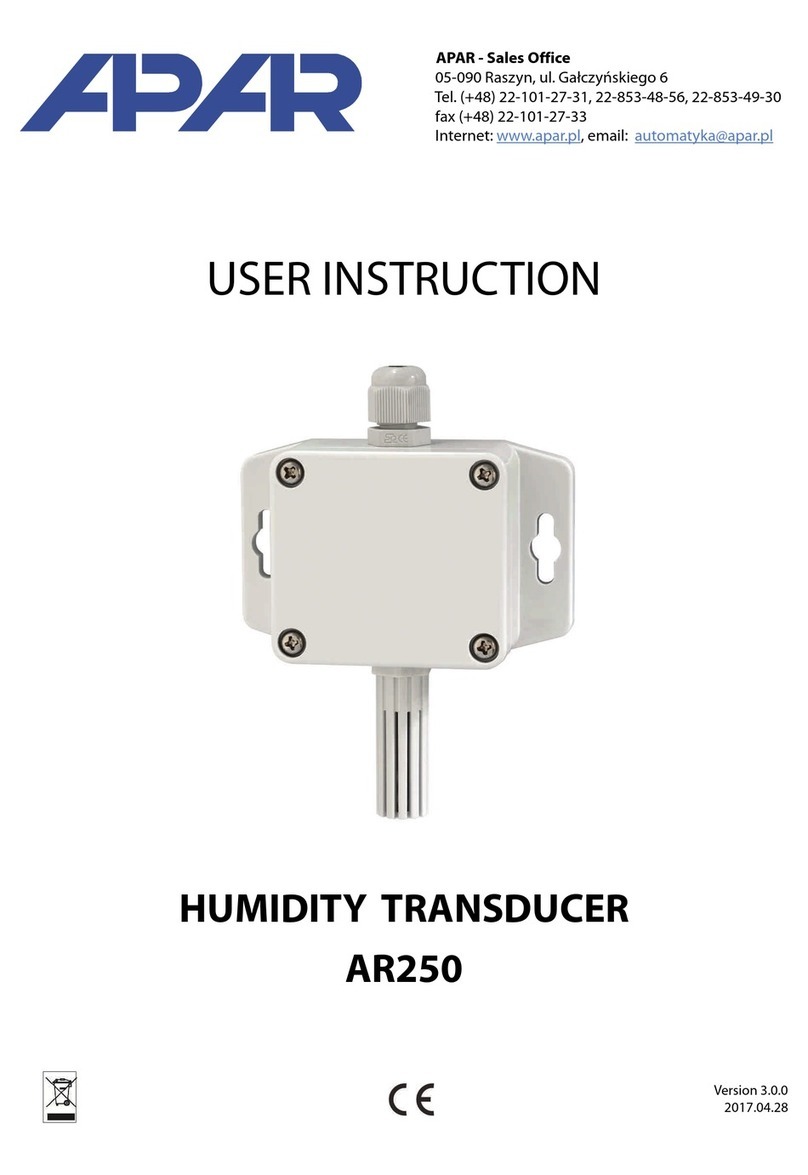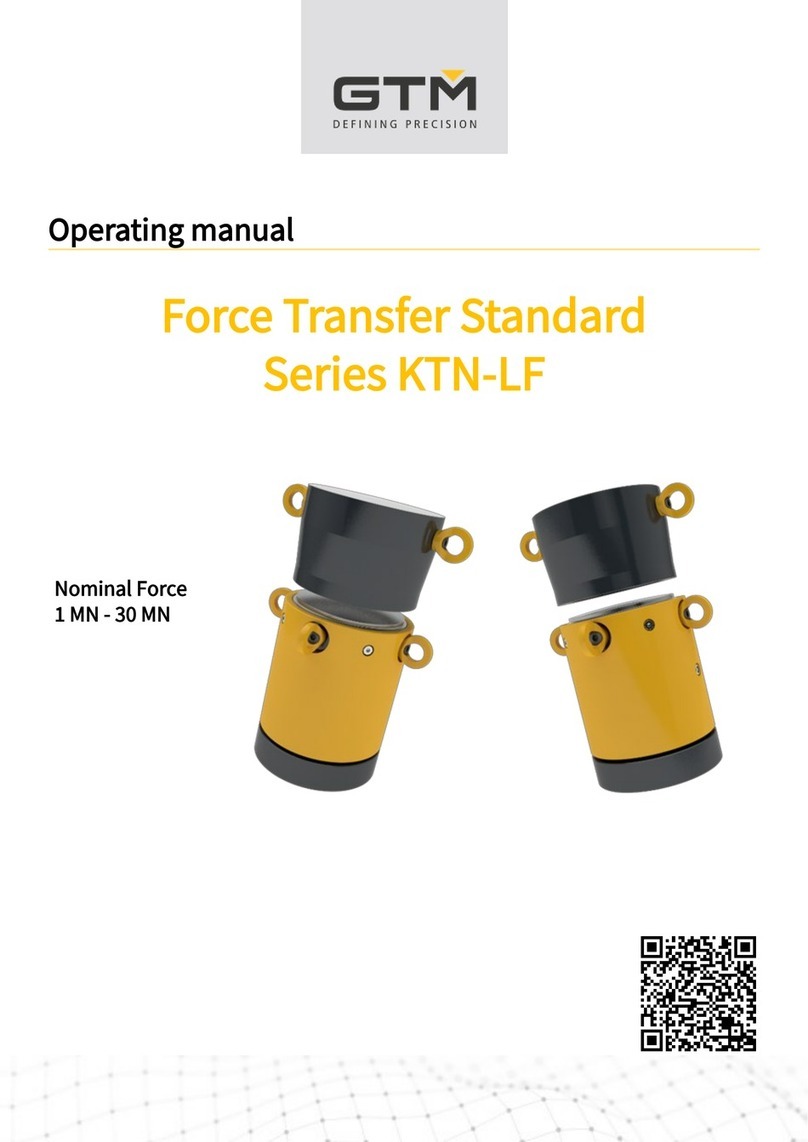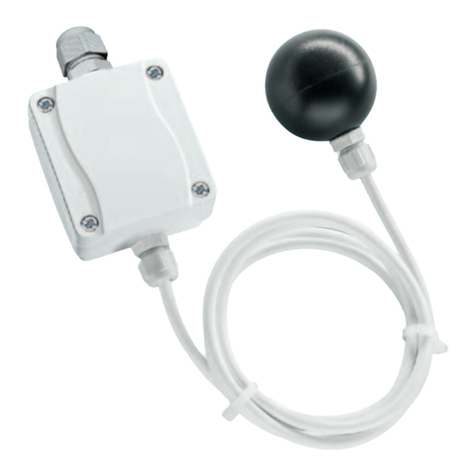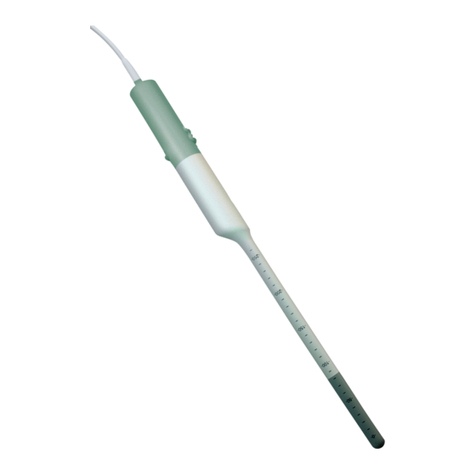CCS WattNode Pulse WNB-3Y-208-P User manual

Continental Control Systems LLC
Rev V17b
(M5)
WattNode®Pulse
Installation and Operation Manual
●WNB-3Y-208-P
●WNB-3Y-400-P
●WNB-3Y-480 -P
●WNB-3Y-600-P
●WNB-3D-240-P
●WNB-3D-400-P
●WNB-3D-480-P
99 Washington Street
Melrose, MA 02176
Phone 781-665-1400
Toll Free 1-800-517-8431
Visit us at www.TestEquipmentDepot.com

2
Information in this document is subject to change without notice.
©2007-2011 Continental Control Systems, LLC. All rights reserved.
Printed in the United States of America.
Document Number: WNB-P-V17b
Revision Date: November 30, 2011
WattNode is a registered trademark of Continental Control Systems, LLC.
FCC Information
This equipment has been tested and complies with the limits for a Class B digital device, pursu-
ant to part 15 of the FCC Rules. Operation is subject to the following two conditions: (1) This
device may not cause harmful interference, and (2) this device must accept any interference
received, including interference that may cause undesired operation.
The FCC limits are designed to provide reasonable protection against harmful interference in a
residential installation. This equipment generates, uses and can radiate radio frequency energy
and, if not installed and used in accordance with the instructions, may cause harmful interfer-
ence to radio communications. However, there is no guarantee that interference will not occur in
a particular installation. If this equipment does cause harmful interference to radio or television
reception, which can be determined by turning the equipment off and on, the user is encouraged
to try to correct the interference by one or more of the following measures:
●Reorient or relocate the receiving antenna.
●Increase the separation between the equipment and receiver.
●Connect the equipment into an outlet on a circuit different from that to which the receiver is
connected.
●Consult the dealer or an experienced radio/TV technician to help.

Contents 3
Contents
Overview ................................................................................................................................4
Pulse Outputs.................................................................................................................................. 4
Diagnostic LEDs .............................................................................................................................. 4
Current Transformers....................................................................................................................... 4
Additional Literature......................................................................................................................... 4
Front Label ...................................................................................................................................... 5
Installation .............................................................................................................................7
Precautions ..................................................................................................................................... 7
Electrical Service Types ................................................................................................................... 8
Single-Phase Two-Wire with Neutral .......................................................................................... 8
Single-Phase Three-Wire (Mid-Point Neutral) ............................................................................. 9
Single-Phase Two-Wire without Neutral ....................................................................................10
Three-Phase Four-Wire Wye.....................................................................................................11
Three-Phase Three-Wire Delta Without Neutral.........................................................................12
Three-Phase Four-Wire Delta (Wild Leg) ...................................................................................12
Grounded Leg Service .............................................................................................................12
Mounting........................................................................................................................................13
Selecting Current Transformers ......................................................................................................14
Connecting Current Transformers...................................................................................................15
Circuit Protection............................................................................................................................16
Connecting Voltage Terminals.........................................................................................................17
Connecting Pulse Outputs..............................................................................................................17
Output Assignments.................................................................................................................18
Pull-Up Resistor Selection ........................................................................................................19
Installation Summary ......................................................................................................................19
Installation LED Diagnostics........................................................................................................... 20
Measurement Troubleshooting....................................................................................................... 22
Operating Instructions.........................................................................................................24
Pulse Outputs.................................................................................................................................24
Power and Energy Computation .................................................................................................... 25
Power and Energy Equations..........................................................................................................27
Maintenance and Repair................................................................................................................ 29
Specifications ......................................................................................................................30
Models .......................................................................................................................................... 30
Model Options ........................................................................................................................ 30
Accuracy..................................................................................................................................31
Measurement ................................................................................................................................ 32
Pulse Outputs................................................................................................................................ 32
Electrical ....................................................................................................................................... 33
Certifications ................................................................................................................................. 35
Environmental................................................................................................................................ 35
Mechanical.................................................................................................................................... 35
Current Transformers..................................................................................................................... 35
Warranty...............................................................................................................................37
Limitation of Liability .......................................................................................................................37

4 Overview
Overview
Congratulations on your purchase of the WattNode®Pulse watt/watt-hour transducer/meter.
It accurately measures energy and power in a compact package. The WattNode meter can fit
in existing electric service panels avoiding the costly installation of sub-panels and associated
wiring. It is designed for use in demand side management (DSM), sub-metering, and energy
monitoring applications. The WattNode meter generates pulses proportional to total watt-hours.
The pulse rate or frequency is proportional to the instantaneous power. Models are available for
single-phase and three-phase, wye and delta configurations for voltages from 120Vac to 600Vac
at 50 and 60Hz.
Pulse Outputs
The WattNode meter generates pulse outputs using one or more optoisolators (also called
photocouplers). These provide 5000 Vac of electrical isolation. The pulse outputs can interface to
monitoring or data logging hardware without concerns about interference, ground loops, shock
hazard, etc.
The standard Pulse WattNode meter makes bidirectional power measurements (energy consump-
tion and energy production). It can be used for conventional power and energy measurement as
well as for net metering and photovoltaic (PV) applications.
●Option P3 - The per-phase measurement option measures one, two, or three separate
branch circuits with a single meter, saving money and space.
●Option PV - The photovoltaic option measures residential PV systems. One WattNode meter
measures the bidirectional total house energy, and the PV (or wind) generated energy. See
Manual Supplement MS-10: Option PV (Photovoltaic) for details.
●Options DPO - The dual positive outputs option behaves exactly like the standard bidirec-
tional model, but with the addition of a second positive pulse output channel (on the P3
output terminal). This allows you to connect to two devices, such as a display and a data
logger. See Manual Supplement MS-11: Option DPO (Dual Positive Outputs) for details.
See Model Options (p. 30)in the Specifications section below for details and more options.
Diagnostic LEDs
The Pulse WattNode meter includes three diagnostic LEDs—one per phase. During normal
operation, these LEDs flash on and off, with the speed of flashing roughly proportional to the
power on each phase. The LEDs flash green for positive power and red for negative power. Other
conditions are signaled with different LED patterns. See the Installation LED Diagnostics (p.
20)section for full details.
Current Transformers
The WattNode meter uses solid-core (toroidal), split-core (opening), and bus-bar style current
transformers (CTs) with a full-scale voltage output of 0.33333 Vac. Split-core and bus-bar CTs
are easier to install without disconnecting the circuit being measured. Solid-core CTs are more
compact, generally more accurate, and less expensive, but installation requires that you discon-
nect the circuit to install the CTs.
Additional Literature
●WattNode Advanced Pulse - Quick Install Guide
●Manual Supplement MS-10: Option PV (Photovoltaic)
●Manual Supplement MS-11: Option DPO (Dual Positive Outputs)
●Manual Supplement MS-17: Option PW (Pulse Width)
●Manual Supplement MS-19: Option SSR (Solid-State Relay)

Overview 5
Front Label
This section describes all the connections, information, and symbols that appear on the front
label.
Continental Control Systems LLC
WATTNODE
®
PULSE
Watthour Meter
3KNN
Boulder, CO USA
Ø
B CT
0.333V~
Ø
C CT
0.333V~
Ø
A CT
0.333V~Status
Status
Status
P1
P2
P3
COM
Output
ØB
ØC
N
ØA
Ø-Ø 240V~Ø-Ø 240V~
240V CAT III240V CAT III
Ø-N 140V~Ø-N 140V~
120V~ 50-60Hz 3W
2010-09-26SN 59063
WNB-3Y-208-P
Q
N
O
P
M
K
UW
HIJ
A
C
B
E
F
G
D
YZ
R
VT X
S
Figure 1: Front Label Diagram
A: WattNode model number. The “WNB” indicates a second generation WattNode meter with
diagnostic LEDs and up to three pulse output channels. The “3” indicates a three-phase model.
The “Y” or “D” indicates wye or delta models, although delta models can measure wye circuits
(the difference is in the power supply). The “208” (or other value) indicates the nominal line-to-
line voltage. Finally, the “P” indicates pulse output.
B: Functional ground. This terminal should be connected to earth ground if possible. It is not
required for safety grounding, but ensures maximum meter accuracy.
C: Neutral. This terminal “N” should be connected to neutral when available.
D, E, F: Line voltage inputs. These terminals connect to the ØA(phase A), ØB(phase B), and
ØC(phase C) electric mains. On wye models the meter is powered from ØAand Nterminals.
On delta models, the meter is powered from the ØAand ØBterminals.
G: Line voltage measurement ratings. This block lists the nominal line-to-neutral “Ø-N 120V~”
voltage, line-to-line “Ø-Ø 240V~” voltage, and the rated measurement voltage and category
“240V CAT III” for this WattNode model. See the Specifications (p. 30)for more informa-
tion about the measurement voltage and category.
H: UL Listing mark. This shows the UL and cUL (Canadian) listing mark and number “3KNN”.
I: FCC Mark. This logo indicates that the meter complied with part 15 of the FCC rules.
J: Status LEDs. These are status LEDs used to verify and diagnose meter operation. See
Installation LED Diagnostics (p. 20)for details.
K: Current transformer (CT) voltage rating. These markings “0.333V~” indicate that the meter
must be used with CTs that generate a full-scale output of 0.333 Vac (333 millivolts).

6 Overview
M, N, O: Current transformer (CT) inputs. These indicate CT screw terminals. Note the white
and black circles at the left edge of the label: these indicate the color of the CT wire that should
be inserted into the corresponding screw terminal. The terminals marked with black circles are
connected together internally.
P: Pulse output common (COM). This is the common terminal for all three pulse output chan-
nels. This terminal should be more negative than the P1, P2, and P3 terminals (unless the
meter was ordered with Option SSR).
Q, R, S: Pulse outputs (P1, P2, P3). These are the pulse output channels. Different models use
one, two, or three channels. They should always be positive relative to the common terminal.
T: Serial number. This shows the meter serial number and options if any are selected. The
barcode contains the serial number in Code 128C format.
U: Mains supply rated voltage. This is the rated supply voltage for this model. The V~indicates
AC voltage. For wye models, this voltage should appear between the Nand ØAterminals. For
delta models, this voltage should appear between the ØAand ØBterminals.
V: Mains frequencies. This indicates the rated mains frequencies for the meter.
W: Maximum rated power. This is the maximum power consumption (watts) for this model.
X: Manufacture date. This is the date of manufacture for the WattNode meter.
Y: Caution, risk of electrical shock. This symbol indicates that there is a risk of electric shock
when installing and operating the meter if the installation instructions are not followed correctly.
Z: Attention - consult Manual. This symbol indicates that there can be danger when installing
and operating the meter if the installation instructions are not followed correctly.
Symbols
Attention -
Consult Installation
and Operation Manual
Read, understand, and follow all instructions in this Installa-
tion and Operation Manual including all warnings, cautions,
and precautions before installing and using the product.
Caution –
Risk of Electrical
Shock
Potential Shock Hazard from Dangerous High Voltage.
CE Marking
Complies with the regulations of the European Union for
Product Safety and Electro-Magnetic Compatibility.
●Low Voltage Directive – EN 61010-1: 2001
●EMC Directive – EN 61327: 1997 + A1/1998 + A2/2001

Installation 7
Installation
Precautions
DANGER — HAZARDOUS VOLTAGES
WARNING - These installation/servicing instructions are for use by qualified personnel
only. To avoid electrical shock, do not perform any servicing other than that contained in
the operating instructions unless you are qualified to do so.
Always adhere to the following checklist:
1) Only qualified personnel or licensed electricians should install the WattNode meter. The
mains voltages of 120Vac to 600Vac can be lethal!
2) Follow all applicable local and national electrical and safety codes.
3) Install the meter in an electrical enclosure (panel or junction box) or in a limited access
electrical room.
4) Verify that circuit voltages and currents are within the proper range for the meter model.
5) Use only UL recognized current transformers (CTs) with built-in burden resistors, that gener-
ate 0.333Vac (333 millivolts AC) at rated current. Do not use current output (ratio) CTs
such as 1amp or 5 amp output CTs: they will destroy the meter and may create a
shock hazard. See Current Transformers (p. 35)for CT maximum input current ratings.
6) Ensure that the line voltage inputs to the meter are protected by fuses or circuit breakers (not
needed for the neutral wire). See Circuit Protection (p. 16)for details.
7) Equipment must be disconnected from the HAZARDOUS LIVE voltages before access.
8) The terminal block screws are not insulated. Do not contact metal tools to the screw termi-
nals if the circuit is live!
9) Do not place more than one line voltage wire in a screw terminal; use wire nuts instead. You
may use more than one CT wire per screw terminal.
10) Before applying power, check that all the wires are securely installed by tugging on each wire.
11) Do not install the meter where it may be exposed to temperatures below –30°C or above
55°C, excessive moisture, dust, salt spray, or other contamination. The meter requires an
environment no worse than pollution degree 2 (normally only non-conductive pollution;
occasionally, a temporary conductivity caused by condensation must be expected).
12) Do not drill mounting holes using the meter as a guide; the drill chuck can damage the screw
terminals and metal shavings can fall into the connectors, causing an arc risk.
13) If the meter is installed incorrectly, the safety protections may be impaired.

8 Installation
Electrical Service Types
Below is a list of service types, with connections and recommended models. Note: the ground
connection improves measurement accuracy, but is not required for safety.
Model Type Line-to-
Neutral
Line-to-
Line
Electrical
Service Types
WNB-3Y-20 8-P Wye 120 Vac 208–240
Vac
1 Phase 2 Wire 120V with neutral
1 Phase 3 Wire 120V/240V with neutral
3 Phase 4 Wire Wye 120V/208V with neutral
WNB-3Y-400-P Wye 230 Vac 400 Vac 1 Phase 2 Wire 230V with neutral
3 Phase 4 Wire Wye 230V/400V with neutral
WNB-3Y-480-P Wye 277 Vac 480 Vac 3 Phase 4 Wire Wye 277V/480V with neutral
1 Phase 2 Wire 277V with neutral
WNB-3Y-60 0 -P Wye 347 Vac 600 Vac 3 Phase 4 Wire Wye 347V/600V with neutral
WNB-3D-240-P Delta
or Wye
120 –140
Vac
208–240
Vac
1 Phase 2 Wire 208V (no neutral)
1 Phase 2 Wire 240V (no neutral)
1 Phase 3 Wire 120V/240V with neutral
3 Phase 3 Wire Delta 208V (no neutral)
3 Phase 4 Wire Wye 120V/208V with neutral
3 Phase 4 Wire Delta 120/208/240V with neutral
WNB-3D-400-P Delta
or Wye 230 Vac 400 Vac 3 Phase 3 Wire Delta 400V (no neutral)
3 Phase 4 Wire Wye 230V/400V with neutral
WNB-3D-480-P Delta
or Wye 277 Vac 480 Vac
3 Phase 3 Wire Delta 480V (no neutral)
3 Phase 4 Wire Wye 277V/480V with neutral
3 Phase 4 Wire Delta 240/415/480V with neutral
*The wire count does NOT include ground. It only includes neutral (if present) and phase wires.
Table 1 : WattNode Models
Single-Phase Two-Wire with Neutral
This configuration is most often seen in homes and offices. The two conductors are neutral and
line. For these models, the meter is powered from the Nand ØAterminals.
Figure 2: Single-Phase Two-Wire Connection
Ground
WHITE
BLACK
ØB CT
ØC CT
ØA CT
ØB
ØC
N
ØA
GND or Common
Input or Positive
Monitoring Equip-
ment or Display
P1
P2
P3
COM
Output
Status
Status
Status
W
ATT
N
ODE
®
P
ULSE
WNB-
WNB--P
-P
Line
Neutral
LINE
LOAD
Shorting
Jumpers
Source
Face
Current
Transformer
3Y-xxx

Installation 9
Recommended WattNode Models
The following table shows the WattNode models that should be used, depending on the line to
neutral voltage.
Line to Neutral Voltage WattNode Model
120 Vac WNB-3Y-20 8-P
230 Vac WNB-3Y-400-P
277 Vac WNB-3Y-480-P
Single-Phase Three-Wire (Mid-Point Neutral)
This configuration is seen in North American residential and commercial service with 240 Vac for
large appliances. The three conductors are a mid-point neutral and two line voltage wires with AC
waveforms 180° out of phase; this results in 120Vac between either line conductors (phase) and
neutral, and 240Vac (or sometimes 208Vac) between the two line conductors (phases).
Figure 3: Single-Phase Three-Wire Connection
Recommended WattNode Models
The following table shows the WattNode models that can be used. If neutral may or may not be
present, you should use the WNB-3D-240-P (see Single-Phase Two-Wire without Neutral
below). If neutral is present, it must be connected for accurate measurements. If phase B may
not be present, you should use the WNB-3Y-208-P (see Single-Phase Two-Wire with Neutral
above).
Meter Power Source WattNode Model
Nand ØA(Neutral and Phase A) WNB-3Y-20 8-P
ØAand ØB(Phase A and Phase B) WNB-3D-240-P
Ground
WHITE
BLACK
ØB CT
ØC CT
ØA CT
ØB
ØC
N
ØA
GND or Common
Input or Positive
Monitoring Equip-
ment or Display
P1
P2
P3
COM
Output
Status
Status
Status
W
ATT
N
ODE
®
P
ULSE
WNB-
WNB--P
-P
Phase A
Neutral
Phase B
WHITE
BLACK
120 Vac
240 Vac
120 Vac
LINE
LOAD
Shorting
Jumper Source
Faces
Current
Transformers
3Y-208
3D-240

10 Installation
Single-Phase Two-Wire without Neutral
This is seen in residential and commercial service with 208 to 240 Vac for large appliances. The
two conductors have AC waveforms 120° or 180° out of phase. Neutral is not used. For this
configuration, the meter is powered from the ØAand ØB(phase A and phase B) terminals.
For best accuracy, we recommend connecting the N(neutral) terminal to the ground terminal.
This will not cause ground current to flow because the neutral terminal does not power the meter.
Figure 4: Single-Phase Two-Wire without Neutral Connection
Recommended WattNode Model
This configuration is normally measured with the following WattNode model.
Line-to-Line Voltage WattNode Model
208 - 240 Vac WNB-3D-240-P
If neutral is available, you may also use the WNB-3Y-208-P model. If you use the WNB-3Y-208-P,
you will need to hook up the meter as shown in section Single-Phase Three-Wire (Mid-Point
Neutral) and connect neutral. You will need two CTs.
If one of the conductors (phase A or phase B) is grounded, see Grounded Leg Service below for
recommendations.
Ground
WHITE
BLACK
ØB CT
ØC CT
ØA CT
ØB
ØC
N
ØA
GND or Common
Input or Positive
Monitoring Equip-
ment or Display
P1
P2
P3
COM
Output
Status
Status
Status
W
ATT
N
ODE
®
P
ULSE
WNB-
WNB--P
-P
Phase A
Phase B
WHITE
BLACK
208-240 Vac
LINE
LOAD
Shorting
Jumper Source
Faces
Current
Transformers
3D-240
Test Equipment Depot - 800.517.8431 - 99 Washington Street Melrose, MA 02176
TestEquipmentDepot.com

Installation 11
Three-Phase Four-Wire Wye
This is typically seen in commercial and industrial environments. The conductors are neutral and
three power lines with AC waveforms shifted 120° between phases. The line voltage conductors
may be connected to the ØA, ØB, and ØC terminals in any order, so long as the CTs are con-
nected to matching phases. It is important that you connect N(neutral) for accurate measure-
ments. For wye “-3Y” models, the meter is powered from the Nand ØAterminals.
Figure 5: Three-Phase Four-Wire Wye Connection
Recommended WattNode Models
The following table shows the WattNode models that should be used, depending on the line-to-
neutral voltage and line-to-line voltage (also called phase-to-phase voltage).
Line-to-Neutral Voltage Line-to-Line Voltage WattNode Model
120 Vac 208 Vac WNB-3Y-20 8-P
230 Vac 400 Vac WNB-3Y-400-P
277 Vac 480 Vac WNB-3Y-480-P
347 Vac 600 Vac WNB-3Y-600-P
Note: you may also use the following delta WattNode models to measure three-phase four-wire
wye circuits. The only difference is that delta WattNode models are powered from ØAand ØB,
rather than Nand ØA. If neutral is present, it must be connected for accurate measurements.
Line-to-Neutral Voltage Line-to-Line Voltage WattNode Model
120 - 140 Vac 208 - 240 Vac WNB-3D-240-P
230 Vac 400 Vac WNB-3D-400-P
277 Vac 480 Vac WNB-3D-480-P
Ground
WHITE
BLACK
ØB CT
ØC CT
ØA CT
ØB
ØC
N
ØA
GND or Common
Input or Positive
Monitoring Equip-
ment or Display
P1
P2
P3
COM
Output
Status
Status
Status
W
ATT
N
ODE
®
P
ULSE
WNB-
WNB--P
-P
Neutral
Phase A
Phase B
Phase C
LOAD
WHITE
BLACK
WHITE
BLACK
LINE
Source
Faces
Current
Transformers
3Y-xxx
3D-xxx

12 Installation
Three-Phase Three-Wire Delta Without Neutral
This is typically seen in manufacturing and industrial environments. There is no neutral wire, just
three power lines with AC waveforms shifted 120° between the successive phases. With this
configuration, the line voltage wires may be connected to the ØA, ØB, and ØC terminals in any
order, so long as the CTs are connected to matching phases. For these models, the meter is
powered from the ØAand ØB(phase A and phase B) terminals. Note: all delta WattNode models
provide a neutral connection N, which allows delta WattNode models to measure both wye and
delta configurations.
For best accuracy, we recommend connecting the N(neutral) terminal to earth ground. This will
not cause ground current to flow because the neutral terminal is not used to power the meter.
Figure 6: Three-Phase Three-Wire Delta Connection
Recommended WattNode Models
The following table shows the WattNode models that should be used, depending on the line-to-
line voltage (also called phase-to-phase voltage).
Line-to-Line Voltage WattNode Model
208 - 240 Vac WNB-3D-240-P
400 Vac WNB-3D-400-P
480 Vac WNB-3D-480-P
Three-Phase Four-Wire Delta (Wild Leg)
The uncommon four-wire delta electrical service is a three-phase delta service with a center-tap
on one of the transformer windings to create a neutral for single-phase loads.
See http://www.ccontrolsys.com/w/Four_Wire_Delta_Circuits for details.
Grounded Leg Service
In rare cases with delta services or single-phase two-wire services without neutral, one of the
phases may be grounded. You can check for this by using a multimeter (DMM) to measure the
voltage between each phase and ground. If you see a reading between 0 and 5Vac, that leg is
probably grounded (sometimes called a “grounded delta”).
Ground
WHITE
BLACK
ØB CT
ØC CT
ØA CT
ØB
ØC
N
ØA
GND or Common
Input or Positive
Monitoring Equip-
ment or Display
P1
P2
P3
COM
Output
Status
Status
Status
W
ATT
N
ODE
®
P
ULSE
WNB-
WNB--P
-P
Phase A
Phase B
Phase C
WHITE
BLACK
WHITE
BLACK
LINE
LOAD
Source
Faces
Current
Transformers
3D-xxx

Installation 13
The WattNode meter will correctly measure services with a grounded leg, but the measured
power for the grounded phase will be zero and the status LED will not light for whichever phase is
grounded, because the voltage is near zero.
For optimum accuracy with a grounded leg, you should also connect the N(neutral) terminal
on the meter to the ground terminal; this will not cause any ground current to flow because the
neutral terminal is not used to power the meter. If you have a grounded leg configuration, you can
save money by removing the CT for the grounded phase, since all the power will be measured on
the non-grounded phases. We recommend putting the grounded leg on the ØBor ØCinputs and
attaching a note to the meter indicating this configuration for future reference.
Mounting
Protect the WattNode meter from moisture, direct sunlight, high temperatures, and conductive
pollution (salt spray, metal dust, etc.) If moisture or conductive pollution may be present, use an
IP 66 or NEMA 4 rated enclosure to protect the meter. Due to its exposed screw terminals, the
meter must be installed in an electrical service panel, an enclosure, or an electrical room. The
meter may be installed in any orientation, directly to a wall of an electrical panel or junction box.
Drawn to Scale
153 mm (6.02")
38 mm (1.50") High
Ø
9.8 mm (0.386")
Ø
5.1 mm (0.200")
136.6 mm (5.375")
85.1 mm (3.35")
Figure 7: WattNode Meter Dimensions
The WattNode meter has two mounting holes spaced 5.375 inches (137 mm) apart (center to
center). These mounting holes are normally obscured by the detachable screw terminals. Remove
the screw terminals by pulling outward while rocking from end to end. The meter or Figure 7
may be used as a template to mark mounting hole positions, but do not drill the holes with the
meter in the mounting position because the drill may damage the connectors and leave drill
shavings in the connectors.
You may mount the meter with the supplied #8 self-tapping sheet metal screws using 1/8 inch
pilot hole (3.2 mm). Or you may use hook-and-loop fasteners. If you use screws, avoid over-tight-
ening which can crack the case. If you don’t use the supplied screws, the following sizes should
work (bold are preferred); use washers if the screws could pull through the mounting holes

14 Installation
Selecting Current Transformers
The rated full-scale current of the CTs should normally be chosen somewhat above the maximum
current of the circuit being measured (see Current Crest Factor below for more details). In some
cases, you might select CTs with a lower rated current to optimize accuracy at lower current
readings. Take care that the maximum allowable current for the CT can not be exceeded without
tripping a circuit breaker or fuse; see Current Transformers (p. 35).
We only offer CTs that measure AC current, not DC current. Significant DC current can saturate
the CT magnetic core, reducing the AC accuracy. Most loads only have AC current, but some rare
loads draw DC current, which can cause measurement errors. See our website for more informa-
tion: http://www.ccontrolsys.com/w/DC_Current_and_Half-Wave_Rectified_Loads.
CTs can measure lower currents than they were designed for by passing the wire through the
CT more than once. For example, to measure currents up to 1 amp with a 5 amp CT, loop the
wire through the CT five times. The CT is now effectively a 1 amp CT instead of a 5 amp CT. The
effective current rating of the CT is the labeled rating divided by the number of times that the wire
passes through the CT.
If you are using the measurement phases of the WattNode (ØA, ØB, and ØC) to measure different
circuits (as with Option P3), you can use CTs with different rated current on the different phases.
Current Crest Factor
The term “current crest factor” is used to describe the ratio of the peak current to the RMS cur-
rent (the RMS current is the value reported by multimeters and the WattNode meter). Resistive
loads like heaters and incandescent lights have nearly sinusoidal current waveforms with a crest
factor near 1.4. Power factor corrected loads such as electronic lighting ballasts and computer
power supplies typically have a crest factor of 1.4 to 1.5. Battery chargers, VFD motor controls,
and other nonlinear loads can have current crest factors ranging from 2.0 to 3.0, and even higher.
High current crest factors are usually not an issue when metering whole building loads, but can
be a concern when metering individual loads with high current crest factors. If the peak current is
too high, the meter’s CT inputs can clip, causing inaccurate readings.
This means that when measuring loads with high current crest factors, you may want to be
conservative in selecting the CT rated current. For example, if your load draws 10 amps RMS, but
has a crest factor of 3.0, then the peak current is 30 amps. If you use a 15 amp CT, the meter will
not be able to accurately measure the 30 amp peak current. Note: this is a limitation of the meter
measurement circuitry, not the CT.
The following graph shows the maximum RMS current for accurate measurements as a function
of the current waveform crest factor. The current is shown as a percentage of CT rated current.
For example, if you have a 10 amp load with a crest factor of 2.0, the maximum CT current is
approximately 85%. Eighty-five percent of 15 amps is 12.75, which is higher than 10 amps, so
your measurements should be accurate. On the other hand, if you have a 40 amp load with a
crest factor of 4.0, the maximum CT current is 42%. Forty-two percent of a 100 amp CT is 42
amps, so you would need a 100 amp CT to accurately measure this 40 amp load.
Screw Style U.S.A. UTS Sizes Metric Sizes
Pan Head or Round Head #6, #8, #10 M3.5, M4, M5
Truss Head #6, #8 M3.5, M4
Hex Washer Head (integrated washer) #6, #8 M3.5, M4
Hex Head (add washer) #6, #8, #10 M3.5, M4, M5
Table 2: Mounting Screws

Installation 15
80%
100%
120%
140%
0%
20%
40%
60%
80%
1.0 1.5 2.0 2.5 3.0 3.5 4.0
Crest Factor
Maximum Accurate CT Current
(Percent of Rated Current)
Figure 8: Maximum CT Current vs. Crest Factor
You frequently won’t know the crest factor for your load. In this case, it’s generally safe to assume
the crest factor will fall in the 1.4 to 2.5 range and select CTs with a rated current roughly 150% of
the expected RMS current. So if you expect to be measuring currents up to 30 amps, select a 50
amp CT.
Connecting Current Transformers
●Use only UL recognized current transformers (CTs) with built-in burden resistors that generate
0.33333Vac (333.33 millivolts AC) at rated current. See Current Transformers (p. 35)for
the maximum input current ratings.
●Do not use ratio (current output) CTs such as 1 amp or 5 amp output CTs: they will destroy
the meter and present a shock hazard! These are commonly labelled with a ratio like 100:5.
●Find the arrow or label “THIS SIDE TOWARD SOURCE” on the CT and face toward the
current source: generally the utility meter or the circuit breaker for branch circuits. If CTs are
mounted backwards or with their white and black wires reversed the measured power will be
negative. The diagnostic LEDs indicates negative power with flashing red LEDs.
●Be careful to match up the current transformers to the voltage phases being measured. Make
sure the ØA CT is measuring the line voltage connected to ØA, and the same for phases B
and C. Use the supplied colored labels or tape to identify the wires.
●To prevent magnetic interference, the CTs on different phases should be separated by 1 inch
(25 mm). The line voltage conductors for each phase should be separated by at least 1 inch
(25 mm) from each other and from neutral.
●For best accuracy, the CT opening should not be much larger than the conductor. If the CT
opening is much larger, position the conductor in the center of the CT opening.
●Because CT signals are susceptible to interference, we recommend keeping the CT wires
short and cutting off any excess length. It is generally better to install the meter near the line
voltage conductors instead of extending the CT wires. However, you may extend the CT wires
by 300 feet (100 m) or more by using shielded twisted-pair cable and by running the CT wires
away from high current and line voltage conductors.
●OPTIONAL: if you see spurious readings on unused phases, jumper the unused CT inputs.
To connect CTs, pass the wire to be measured through the CT and connect the CT to the meter.
Always remove power before disconnecting any live wires. Put the line conductors through
the CTs as shown in the section Electrical Service Types (p. 8). You may measure gener-
ated power by treating the generator as the source.

16 Installation
Circuit Protection
The WattNode meter is considered “permanently connected equipment”, because it does not
use a conventional power cord that can be easily unplugged. Permanently connected equip-
ment must have overcurrent protection and be installed with a means to disconnect the
equipment.
●A switch, disconnect, or circuit breaker may be used to disconnect the meter and must be
as close as practical to the meter. If a switch or disconnect is used, then there must also be a
fuse or circuit breaker of appropriate rating protecting the meter.
●WattNode meters only draw 10-30 milliamps; CCS recommends using circuit breakers or
fuses rated for between 0.5 amps and 20 amps and rated for the line voltages and the cur-
rent interrupting rating required.
●The circuit breakers or fuses must protect the ungrounded supply conductors (the terminals
labeled ØA, ØB, and ØC). If neutral is also protected (this is rare), then the overcurrent protec-
tion device must interrupt neutral and the supply conductors simultaneously.
●Any switches or disconnects should have at least a 1 amp rating and must be rated for the
line voltages.
●The circuit protection / disconnect system must meet IEC 60947-1 and IEC 60947-3, as well
as all national and local electrical codes.
●The line voltage connections should be made with wire rated for use in a service panel or
junction box with a voltage rating sufficient for the highest voltage present. CCS recommends
14 or 12 AWG (1.5 mm2or 2.5 mm2) stranded wire, rated for 300 or 600 volts. Solid wire may
be used, but must be routed carefully to avoid putting excessive stress on the screw terminal.
●The WattNode meter has an earth connection, which should be connected for maximum
accuracy. However, this earth connection is not used for safety (protective) earthing.
For solid-core CTs, disconnect the line voltage conductor to install it through the CT opening.
Split-core and bus-bar CTs can be opened for installation around a wire by puling the removable
section straight away from the rest of the CT or unhooking the latch; it may require a strong pull.
Some CT models include thumb-screws to secure the opening. The removable section may fit
only one way, so match up the steel core pieces when closing the CT. If the CT seems to jam and
will not close, the steel core pieces are probably not aligned correctly; DO NOT FORCE together.
Instead, reposition or rock the removable portion until the CT closes without excessive force. A
nylon cable tie can be secured around the CT to prevent inadvertent opening.
Some split-core CT models have flat mating surfaces. When installing this type of CT, make sure
that mating surfaces are clean. Any debris between the mating surfaces will increase the gap,
decreasing accuracy.
Next, connect the CT lead wires to the meter terminals labeled ØA CT, ØB CT, and ØC CT. Route
the twisted black and white wires from the CT to the meter. We recommend cutting off any
excess length to reduce the risk of interference. Strip 1/4 inch (6 mm) of insulation off the ends of
the CT leads and connect to the six position black screw terminal block. Connect each CT lead
with the white wire aligned with the white dot on the label, and the black wire aligned with the
black dot. Note the order in which the phases are connected, as the voltage phases must match
the current phases for accurate power measurement.
Finally record the CT rated current as part of the installation record for each meter. If the conduc-
tors being measured are passed through the CTs more than once, then the recorded rated CT
current is divided by the number of times that the conductor passes through the CT.

Installation 17
Connecting Voltage Terminals
Always turn off or disconnect power before connecting the voltage inputs to the meter. Con-
nect each phase voltage to the appropriate input on the green terminal block; also connect
ground and neutral (if required).
The voltage inputs to the meter do not need to be powered from to the same branch circuit as
the load being monitored. In other words, if you have a three-phase panel with a 100 A three-pole
breaker powering a motor that you wish to monitor, you can power the meter (or several meters)
from a separate 20 A three-pole breaker installed in the same, or even adjacent panel, so long as
the load and voltage connections are supplied from the same electric service.
The green screw terminals handle wire up to 12 AWG (2.5 mm2). Strip the wires to expose 1/4” (6
mm) of bare copper. When wiring the meter, do not put more than one wire under a screw. If you
need to distribute power to other meters, use wire nuts or a power distribution block. The section
Electrical Service Types (p. 8) shows the proper connections for the different meter models
and electrical services. Verify that the voltage line phases match the CT phases.
If there is any doubt that the meter voltage rating is correct for the circuit being measured, unplug
the green terminal block (to protect the meter), turn on the power, and use a voltmeter to compare
the voltages (probe the terminal block screws) to the values in the white box on the meter front
label. After testing, plug in the terminal block, making sure that is pushed in all the way.
The WattNode meter is powered from the voltage inputs: ØA(phase A) to N(neutral) for wye
“-3Y” models, or ØA to ØBfor delta “-3D” models. If the meter is not receiving at least 80% of the
nominal line voltage, it may stop operating. Since the meter consumes a small amount of power
itself (typically 1-3 watts), you may wish to power the meter from a separate circuit or place the
current transformers downstream of the meter, so its power consumption is not measured
For best accuracy, always connect the N(neutral) terminal on the meter. If you are using a delta
meter and the circuit has no neutral, then jumper the earth ground to the N(neutral) terminal.
When power is first applied to the meter, check that the LEDs behave normally (see Installa-
tion LED Diagnostics (p. 20)below): if you see the LEDs flashing red-green-red-green, then
disconnect the power immediately! This indicates the line voltage is too high for this model.
1.0sec
GRGRGRGRGRGR
GRGRGRGRGRGR
GRGRGRGRGRGR
C
B
A
Figure 9: WattNode LED Overvoltage Warning
Connecting Pulse Outputs
●The outputs P1, P2, and P3 should not be connected to negative voltages (except with
Option SSR), or to voltages greater than +60Vdc.
●The recommended maximum current through the pulse output optoisolators is 5 mA,
although they will generally switch 8-10 mA. If you need to switch higher currents, contact us
about Option SSR (solid-state relay); see Specifications - Option SSR Outputs (p. 33).
●The outputs are isolated (5000 Vac RMS) from dangerous voltages, so you can connect them
with the meter powered. The outputs are also isolated from the meter’s earth ground and
neutral connections.
●If the output wiring is located near line voltage wiring, use wires or cables rated for the high-
est voltage present, generally 300V or 600V rated wire.
●If this cable will be in the presence of bare conductors, such as bus-bars, it should be double
insulated or jacketed.
●When wiring over long distances, use shielded twisted-pair cable to prevent interference.

18 Installation
The pulse output channels are the collector and emitter of an optoisolator transistor (also called
a photocoupler) controlled by the meter’s pulse stream (see Option SSR Outputs (p. 33)for
solid-state relay outputs). These outputs may be connected to most data monitoring devices that
expect a contact closure or relay input: data loggers, energy management systems, etc. Most of
these devices provide excitation voltage with internal pull-up resistors. If your device does not, the
following schematic illustrates connecting pull-up resistors on all three optoisolator outputs with a
pull-up voltage of 5 Vdc.
5V
Rpullup Rpullup
P1
P2
P3
COM
Rpullup
WATTNODE
Figure 10: Optoisolator Outputs
The meter can have from one to three pulse output channels. All three output channels share the
common COM or ground connection. Each output channel has its own positive output connec-
tion, labeled P1, P2, and P3 (tied to the transistor collectors).
Output Assignments
The following table shows the pulse output channel assignments for the standard bidirectional
output model and different options. See Manual Supplement MS-10 for details about Option PV,
and Manual Supplement MS-11 for details about Option DPO.
WattNode Outputs P1 Output P2 Output P3 Output
Standard:
Bidirectional Outputs
Positive real energy
(all phases)
Negative real energy
(all phases)
Not used
Option P3:
Per-Phase Outputs
Phase A positive
real energy
Phase B positive
real energy
Phase C positive
real energy
Option PV:
Photovoltaic
Phases A+B positive
real energy
Phases A+B negative
real energy
Phase C positive
real energy
Option DPO:
Dual Positive Outputs
Positive real energy
(all phases)
Negative real energy
(all phases)
Positive real energy
(all phases)
Table 3: Pulse Output Assignments
Note: we use the terms “positive” and “negative”, but other common terms are “production” and
“consumption”. You can wire the meter so that positive energy corresponds to either production
or consumption, depending on your application.
Test Equipment Depot - 800.517.8431 - 99 Washington Street Melrose, MA 02176
TestEquipmentDepot.com

Installation 19
Pull-Up Resistor Selection
For standard WattNode meters with the normal 4.00Hz full-scale frequency, pull-up resistor
values between 10kΩ and 100kΩ work well. You may use values of 1.0MΩ or higher to reduce
power consumption for battery powered equipment. Note: pull-up resistor values of 1.0MΩ or
higher will make the pulse output signal more susceptible to interference, so you may want to
keep the wiring short, use shielded cable, and avoid running the pulse signal near AC wiring.
The following table lists pull-up resistor values (in ohms, kilo-ohms, and mega-ohms) to use
with the pulse output channels, particularly if you have ordered a model with a pulse frequency
different than 4.00Hz. For each configuration, the table lists a recommended value, followed by
minimum and maximum resistor values. These values typically result in a pulse waveform rise
time (from 20% to 80% of the pull-up voltage) of less than 10% of the total pulse period. The fall
time is roughly constant in the 2 to 10 microsecond range. Lower resistance will result in faster
switching and increase the current flow. If your frequency isn’t in the table, use the next higher
frequency or interpolate between two values.
Full-Scale
Pulse
Frequency
Pull-up to 3.0 Vdc
Recommended
(Min-Max)
Pull-up to 5.0 Vdc
Recommended
(Min-Max)
Pull-up to 12 Vdc
Recommended
(Min-Max)
Pull-up to 24 Vdc
Recommended
(Min-Max)
1 Hz 470kΩ (600Ω-4.7M) 470kΩ (1.0k-5.6M) 47 0 k Ω ( 2. 4 k-7. 5 M ) 1.0 M Ω (4.7k- 9.1M )
4 Hz 100kΩ (600Ω-1.2M) 100kΩ (1.0k-1.6M) 100kΩ (2.4k-2.2M) 200kΩ (4.7k-3.0M)
10 Hz 47kΩ (600Ω-470k) 47kΩ (1.0k-620k) 47kΩ (2.4k-910k) 100kΩ (4.7k-1.3M)
50 Hz 10kΩ (600Ω-91k) 10kΩ (1.0k-130k) 20kΩ (2.4k-200k) 47kΩ (4.7k-270k)
100 Hz 4.7kΩ (600Ω-47k) 4.7kΩ (1.0k-62k) 10kΩ (2.4k-100k) 20kΩ (4.7k-130k)
200 Hz 2.0kΩ (600Ω-24k) 2.0kΩ (1.0k-33k) 4.7kΩ (2.4k-47k) 10kΩ (4.7k-68k)
600 Hz 2.0kΩ (600Ω-8.2k) 2.0kΩ (1.0k-12k) 4.7kΩ (2.4k-16k) 10kΩ (4.7k-22k)
Table 4: Recommended Pulse Output Pull-up Resistors
When the optoisolator is on (conducting), there is a small voltage drop between the common and
output terminals, typically 0.1 - 0.4 volts, called the saturation voltage. This voltage depends on
the current flow through the optoisolator (see Specifications - Optoisolator Outputs (p. 32)
below for details). To compute the current flow through the optoisolator, use the following approxi-
mate equation:
●Vpullup - The supply voltage for the pull-up resistor (DC volts).
●Rpullup - The pull-up resistor resistance (ohms).
●Iopto - The approximate current (amps) through the optoisolator when it is on (conducting).
Iopto = Vpullup / Rpullup
Installation Summary
1) Mount the WattNode meter.
2) Turn off power before installing solid-core (non-opening) CTs or making voltage connections.
3) Mount the CTs around the line voltage conductors being measured. Take care to orient the
CTs facing the source of power.
4) Connect the twisted white and black wires from the CT to the six position black terminal
block on the meter, matching the wire colors to the white and black dots on the front label.
5) Connect the voltage wires including ground and neutral (if present) to the green terminal
block, and check that the current (CT) phases match the voltage measurement phases.
6) Connect the pulse output terminals of the meter to the monitoring equipment.
7) Apply power to the meter.
8) Verify that the LEDs light correctly and don’t indicate an error condition.

20 Installation
Installation LED Diagnostics
The WattNode meter includes multi-color power diagnostic LEDs for each phase to help verify
correct operation and diagnose incorrect wiring. The LEDs are marked “Status” on the label. The
following diagrams and descriptions explain the various LED patterns and their meanings. The A,
B, and C on the left side indicate the phase of the LEDs. Values like “1.0sec” and “3.0sec” indi-
cate the time the LEDs are lit in seconds. In the diagrams, sometimes the colors are abbreviated:
R = red, G or Grn = green, Y = yellow.
Normal Startup
On initial power-up, the LEDs will all light up in a red,
yellow, green sequence. After this startup sequence, the
LEDs will show the status, such as Normal Operation
below.
Normal Operation
During normal operation, when positive power is measured
on a phase, the LED for that phase will flash green. Typical
flash rates are shown below.
Percent of Full-Scale Power LED Flash Rate Flashes in 10 Seconds
100% 5.0 Hz 50
50% 3.6 Hz 36
25% 2.5 Hz 25
10% 1.6 Hz 16
5% 1.1 Hz 11
1% (and lower) 0.5 Hz 5
Table 5: LED Flash Rates vs. Power
Zero Power
For each phase, if line Vac is present, but the measured
power is below the minimum that the meter will measure (see
Specifications - Measurement - Creep Limit), the meter will display solid green for that phase.
Inactive Phase
If the meter detects no power and line voltage below 20% of
nominal, it will turn off the LED for the phase.
Negative Power
If one or more of the phase LEDs are flashing red, it
indicates negative power (power flowing into the grid) on
those phases. The rate of flashing indicates magnitude of
negative power (see Table 5 above). This can happen for
the following reasons:
●This is a bidirectional power measurement application, such as a photovoltaic system, where
negative power occurs whenever you generate more power than you consume.
●The current transformer (CT) for this phase was installed backwards on the current carrying
wire or the white and black wires for the CT were reversed at the meter. This can be solved
by flipping the CT on the wire or swapping the white and black wires at the meter.
●In some cases, this can also occur if the CT wires are connected to the wrong inputs, such
as if the CT wires for phases B and C are swapped.
1.0sec
1.0sec1.0sec
GreenYellowRed
GreenYellowRed
GreenYellowRed
C
B
A
Green Off Green Off Green Off
Green
Off
C
B
A
Red Off Red Off Red Off
Red Off Red Off Red
Off
Red Off Red Off Red Off
This manual suits for next models
6
Table of contents
Other CCS Transducer manuals
Popular Transducer manuals by other brands
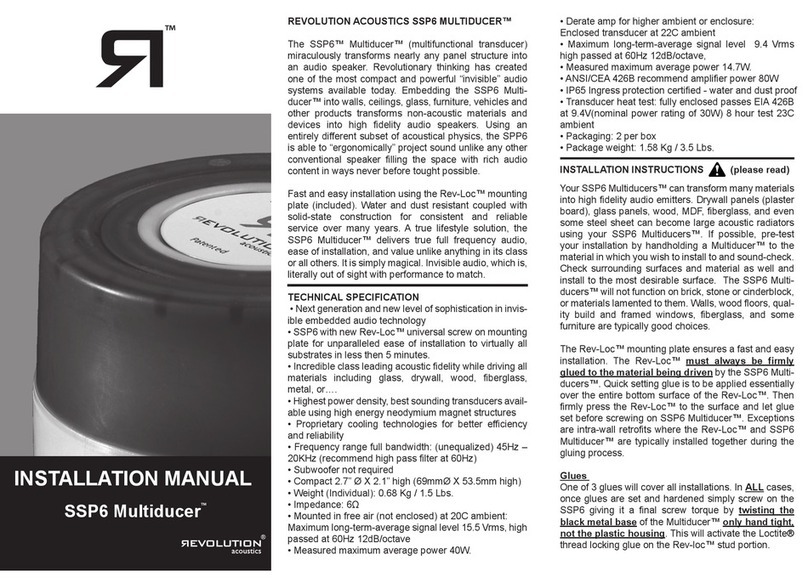
R/Evolution
R/Evolution Multiducer SSP6 installation manual
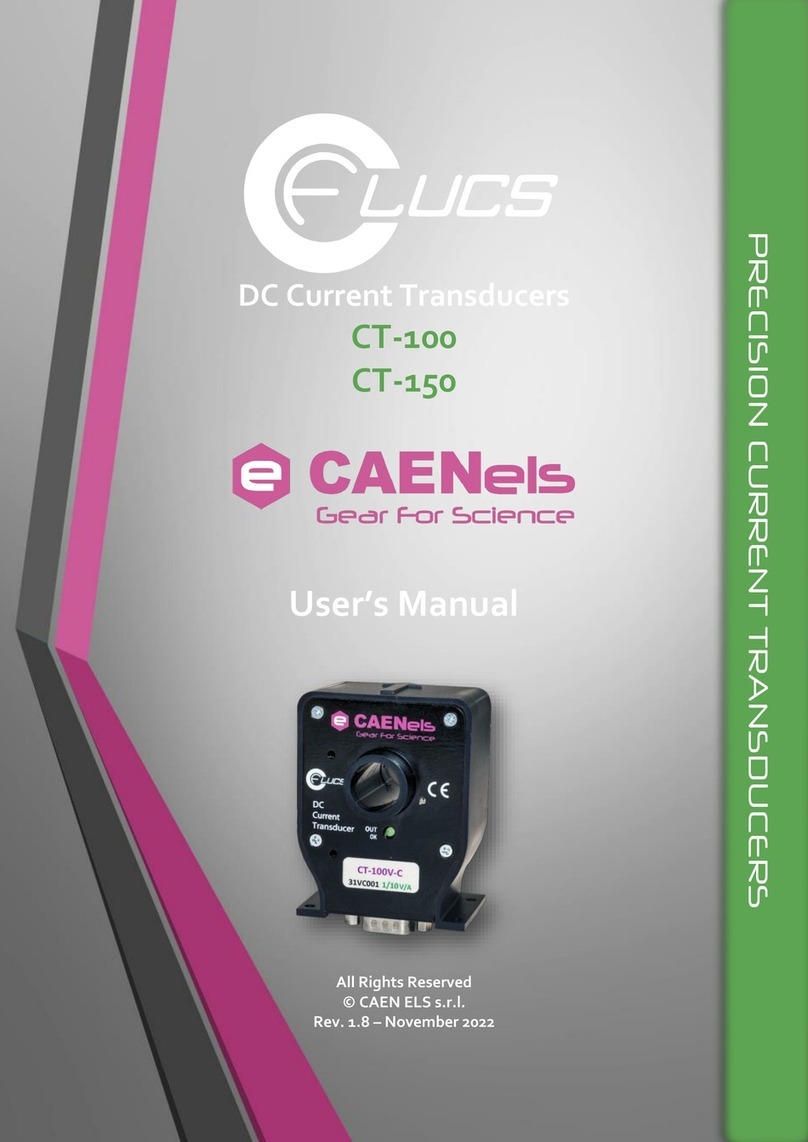
Caen ELS
Caen ELS Flucs CT -100 user manual

BIOPAC Systems, Inc.
BIOPAC Systems, Inc. MP150 Hardware guide
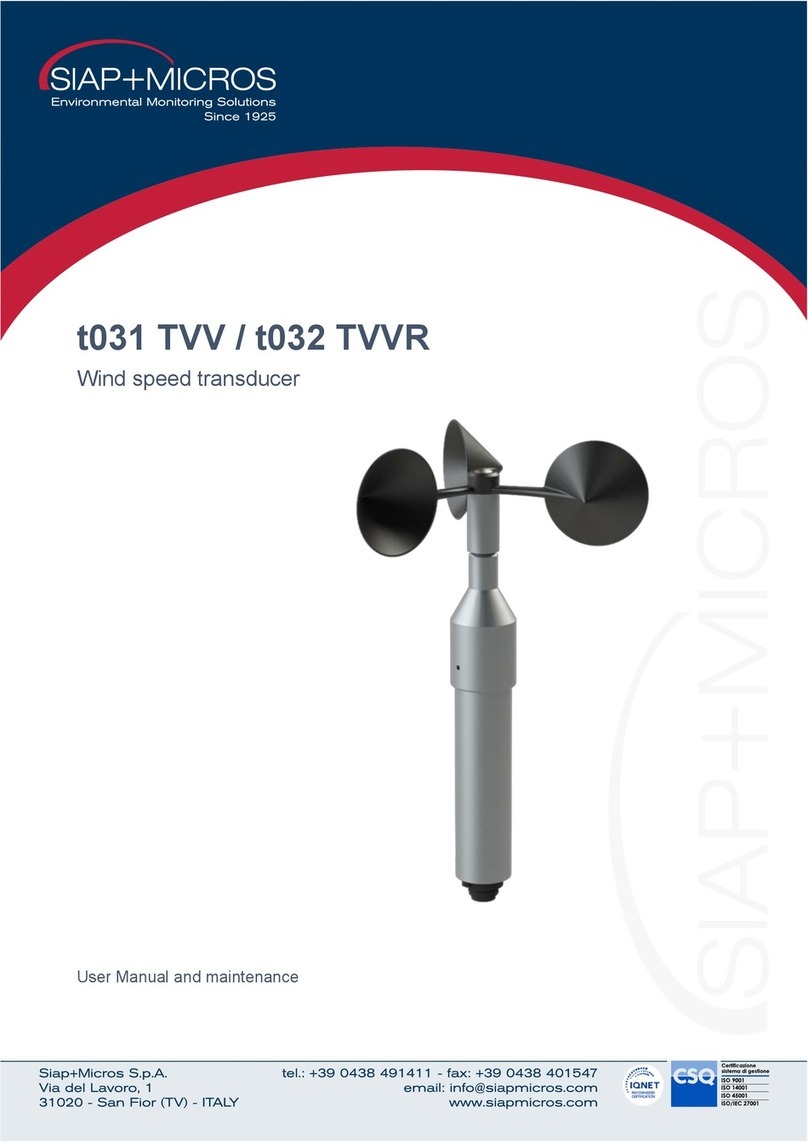
SIAP+MICROS
SIAP+MICROS t031 TVV User manual and maintenance
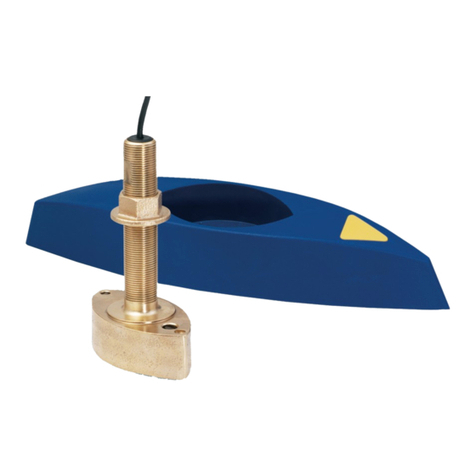
Airmar
Airmar B39 Owner's guide & installation instructions
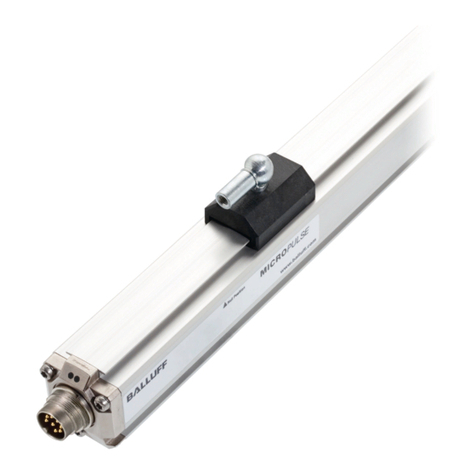
Balluff
Balluff MICROPULSE+ BTL7-A501-M Series user guide
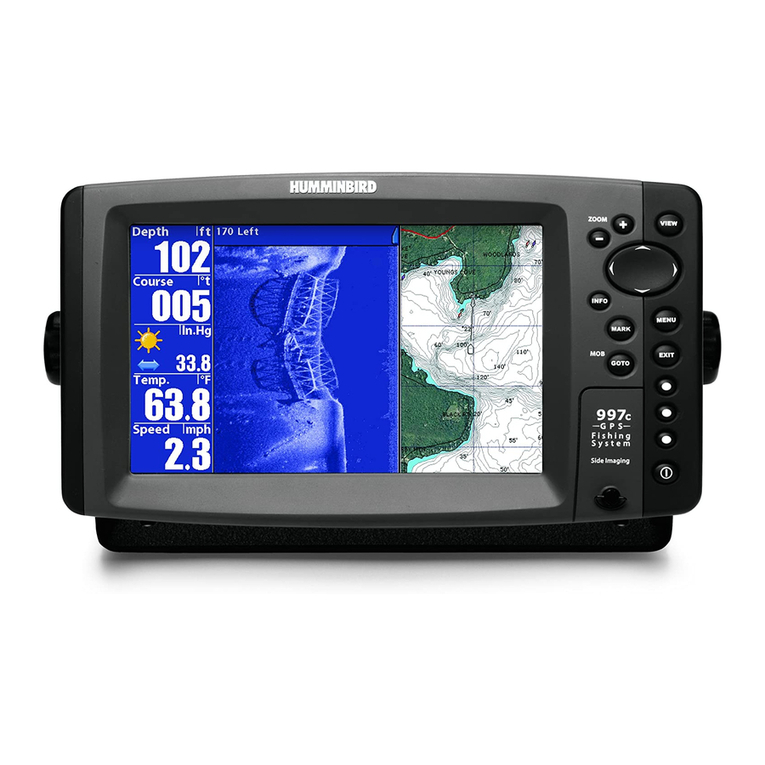
Humminbird
Humminbird 900 Series installation guide
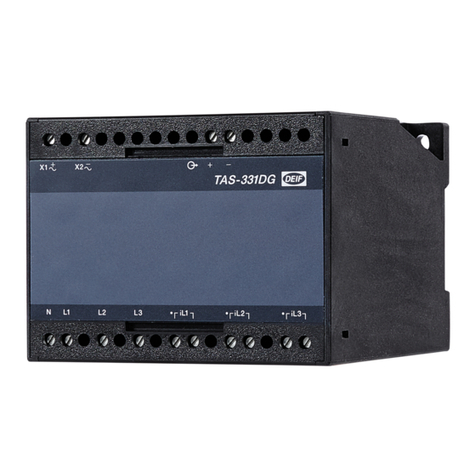
Deif
Deif TAS-331DG Installation and start-up instructions
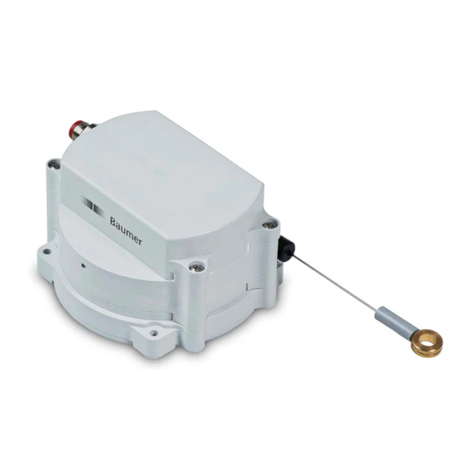
Baumer
Baumer GCA5 Assembly instruction and safety information
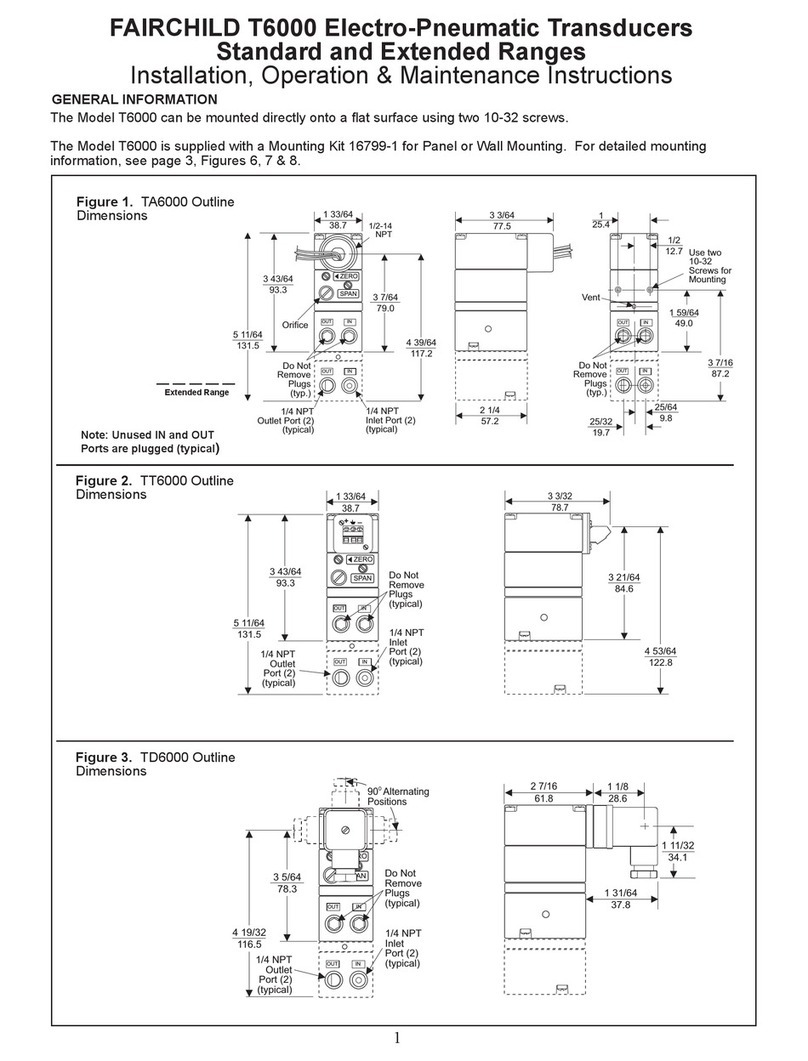
Fairchild
Fairchild T6000 Installation, operation & maintenance instructions
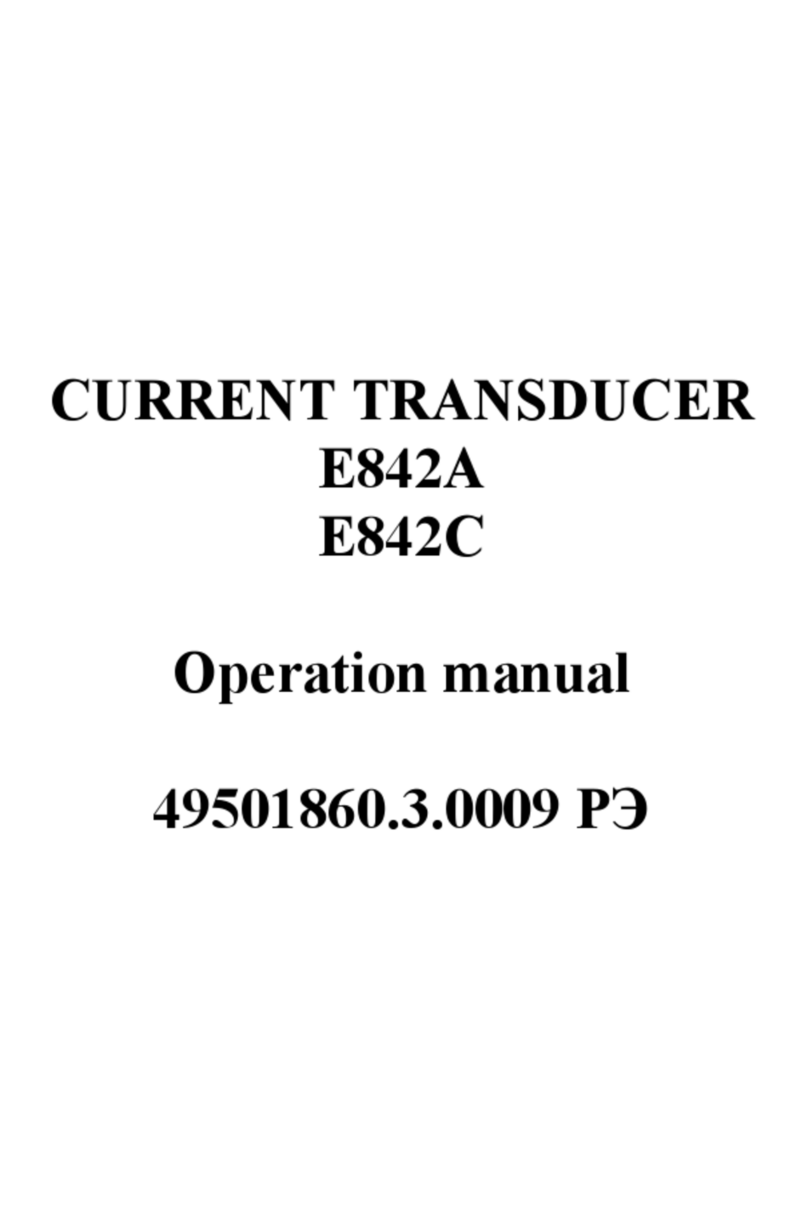
Alecto
Alecto E842A Operation manual
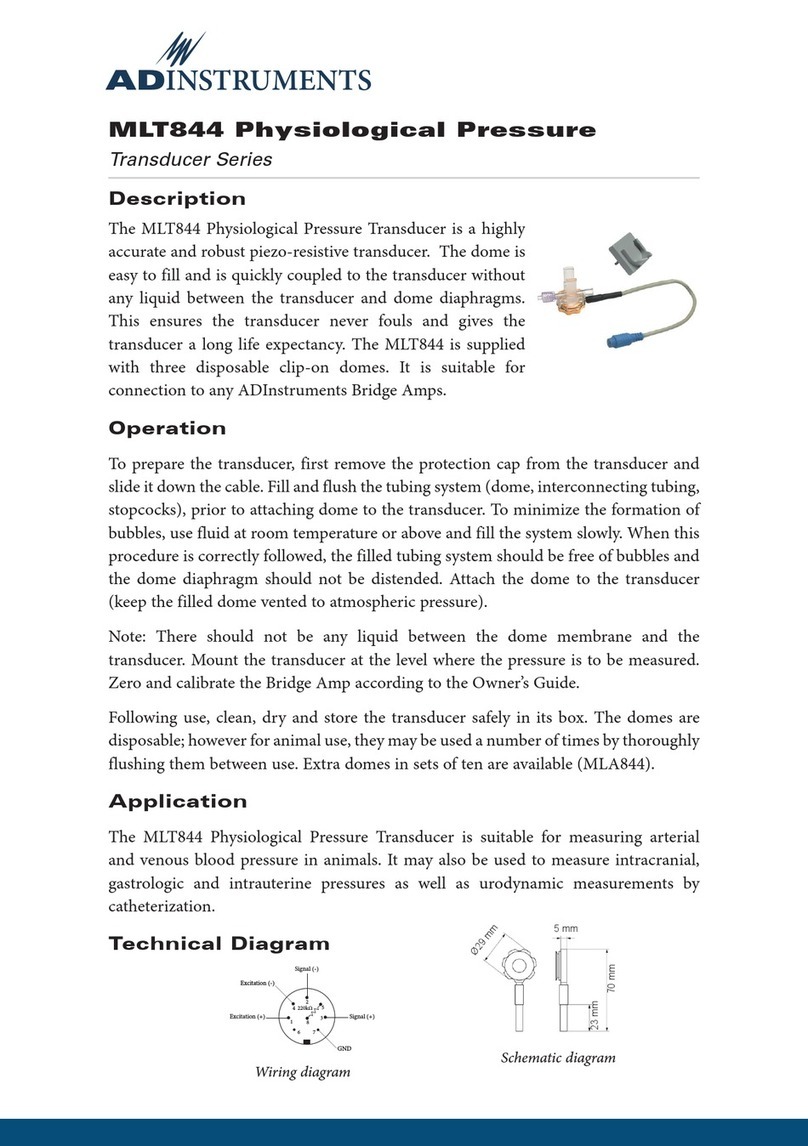
ADInstruments
ADInstruments MLT844 quick start guide
